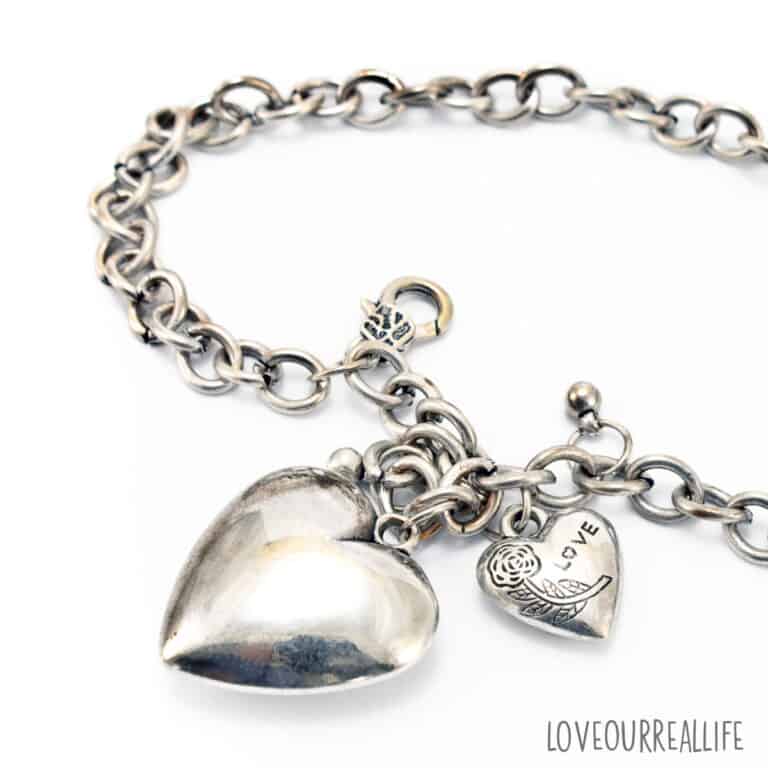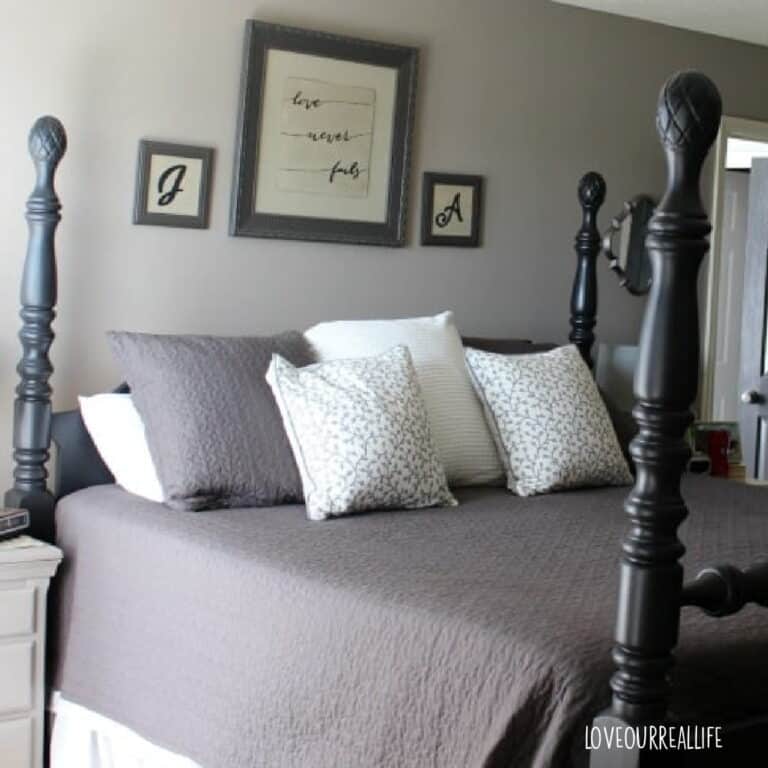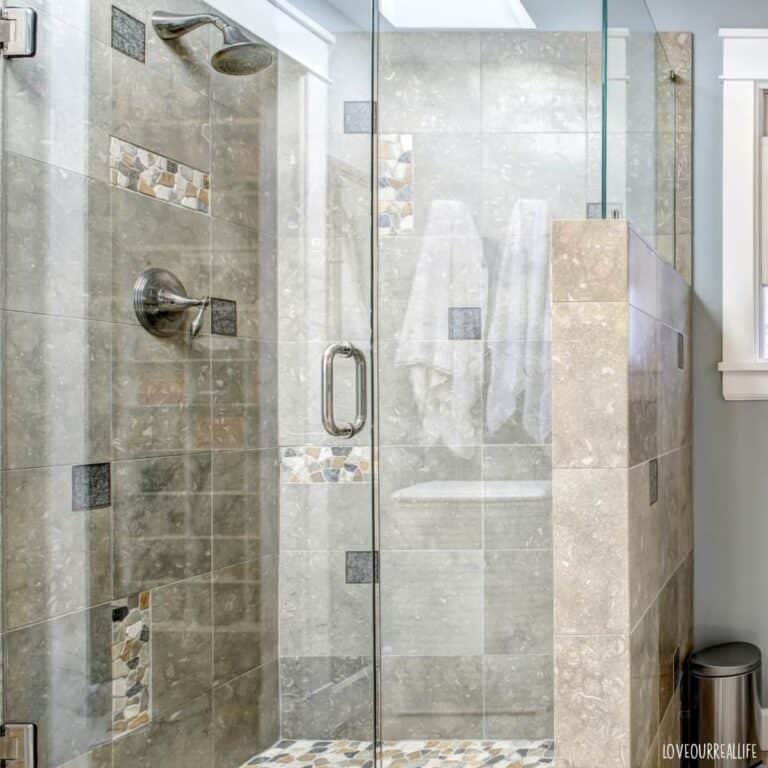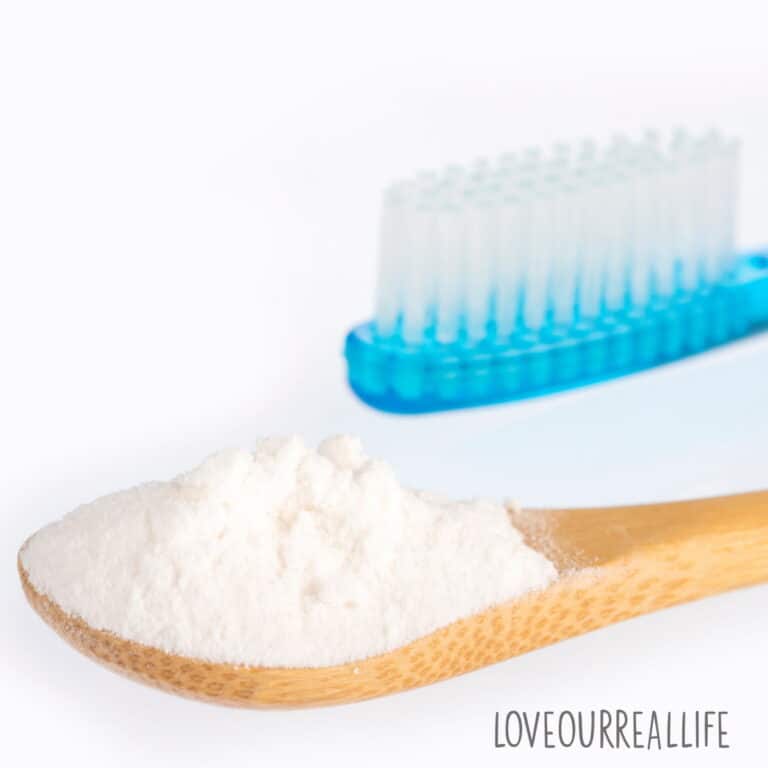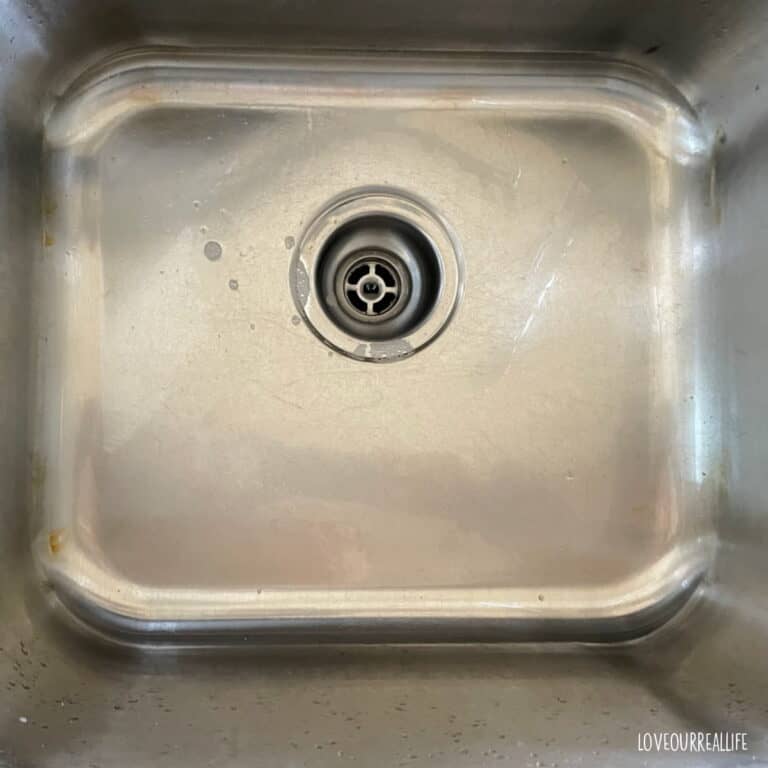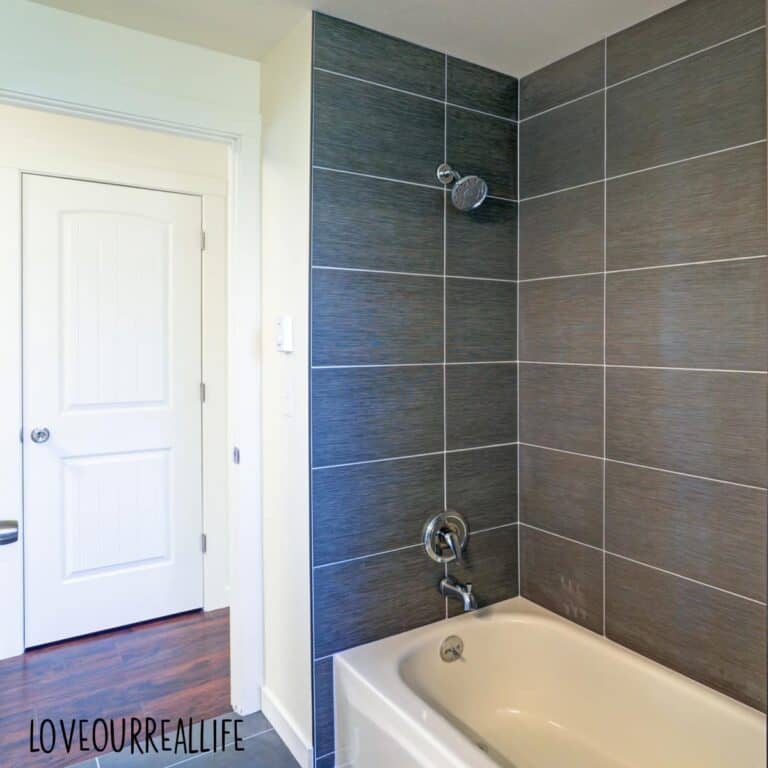How to Clean Bathroom Tile Grout Mold (4 Simple Ways)
Mold loves to grow in the grout lines between bathroom tiles since it’s a dark and damp place, perfect for spores to take hold. If you don’t clean this area regularly, black mold can start to grow, giving your bathroom an unsightly and unhealthy appearance. The worst is that if left uncleaned, mold spores expose your family to health hazards like headaches, wheezing, coughing, and itching.
You can clean bathroom tile grout mold using a combination of hydrogen peroxide and baking soda, distilled white vinegar, chlorine bleach, and baking soda paste. These compounds are readily available in a home setting and work by killing molds and their spores.

In the rest of this article, I’ll explain how to make DIY grout cleaners and use them to clean mold from your bathroom grout tile.
You can save some bucks by making DIY grout cleaners using cleaning products already in your kitchen. Let’s get started!
Get more tips for cleaning your home here and tips for cleaning the bathroom step by step here.
1. Hydrogen Peroxide and Baking Soda Paste
Hydrogen peroxide is a common ingredient in many grout cleaners because it’s a bleaching agent that kills mold and mildew. It works by oxidizing compounds in organic life. On the other hand, baking soda is abrasive, so it can help scrub the mold away.
The good thing is that these ingredients are readily available, and you may have them in your kitchen.
Here is how to make this grout cleaner:
- Mix one part hydrogen peroxide and one part baking soda.
- Add one tablespoon of dish soap.
After mixing these ingredients, you get a thick oxygen bleach paste that will adhere to the grout lines without dripping. The next step is to apply the paste to the grout lines.

Use an Old Toothbrush To Apply the Paste
You can use an old toothbrush to apply the paste to the shower grout. The bristles will help work the paste into the cracks and crevices of grout of your shower tiles.
Let the paste sit for about fifteen minutes to an hour to work its magic on the bathroom mold and soap scum. This ensures the death of all the molds, including their spores.
Scrub Away and Rinse the Mold
After the paste has had some time to work, it’s time to grab a scrub brush and scrub away the mold. Here’s the best way:
- Dip the brush in warm water and into the baking soda and hydrogen peroxide paste.
- Scrub the grout lines in a back-and-forth motion.
- Use a spray bottle filled with clean water to rinse away the paste. Alternatively, use a clean rag dipped in clean water.
2. Distilled White Vinegar for Removing Mold
Distilled white vinegar is another readily available compound you can use to clean bathroom grout tile mold. It’s an excellent grout cleaning agent since it lacks a coloring agent. Therefore, it won’t stain your bathroom tiles or grout.
Vinegar works well on floor tiles, toilets, shower walls, painted bathroom walls, and mirrors too.
Here is how to use distilled white vinegar to clean your bathroom grout tile mold:
- Fill a spray bottle with white distilled vinegar.
- Saturate the affected area with vinegar.
- Leave the vinegar to sit for about an hour, then scrub the grout lines with a brush. You can also use an old toothbrush or a nylon-bristled brush to clean tile grout.
- Rinse away the residue using clean water.
- Saturate the area once more with vinegar and let it sit for 30 minutes before scrubbing and rinsing it away with warm water.
- Clean the area with a towel to ensure it’s as clean as possible, with no visible signs of mold or spores.
You’ll have to repeat the process if you see any visible signs of mold or spores on the grout or within the tiles. This is to prevent future mold growth.
Expert Tip: You must be careful when scrubbing between the grout tiles. If you’re not cautious, you can chip away the grout, weakening the tiles.
3. Chlorine Bleach
Clorox is a brand of chlorine bleach you can use to clean mold from your bathroom grout tile. It works by killing mold spores and preventing them from growing back.
Here is how to use clorox for mold removal from your bathroom grout tile:
- Mix one part clorox bleach with two parts water.
- Pour the mixture into a spray bottle and saturate the affected area.
- Let the mixture sit for about fifteen minutes, then scrub the grout lines with an old toothbrush or a nylon-bristled brush.
- Rinse the area with clean water.
You can also make an excellent cleaning paste by mixing one part bleach with two parts baking soda. Apply the paste to the grout lines and let it sit for about fifteen minutes before scrubbing with a nylon bristle brush and rinsing it away.
Note: You must be careful when using chlorine bleach since it’s a corrosive agent. It can damage your bathroom tiles and grout if used in large amounts or for extended periods.
Always wear rubber gloves and ensure proper ventilation when working with harsh chemicals.
RELATED: How to Clean Shower Curtain Liner Without Washing Machine
4. Baking Soda Paste
Baking soda paste is an excellent product for cleaning moldy grout. It’s a natural cleaning agent that’s gentle on surfaces.
Here’s the procedure to make and use baking soda paste to clean grout:
- Mix one part baking soda with two parts water.
- Apply the thick paste to the grout lines and let it sit until it dries.
- Put distilled white vinegar in a spraying bottle and spray the dry baking soda paste. The mixture will start to fizz.
- Let the mixture sit for about five minutes, then scrub the grout lines with a brush with fairly stiff bristles.
- Rinse away the residue using clean water.

You can also add hydrogen peroxide to the baking soda paste to form an even more potent cleaning agent for nasty mold and deep stains.
Causes of Molds in Bathroom Grout Tiles
You may be wondering why mold keeps growing in your bathroom grout tiles or shower walls even after trying so hard to get rid of it.
The answer lies in understanding the causes of mold growth so you can avoid them in the future.
According to the Centers for Disease Control and Prevention, molds are fungi that grow in moist and damp conditions. They release spores into the air, which can land on surfaces and start to grow if the conditions are right.
Bathrooms are especially susceptible to mold growth because they’re often humid and moist. This is why it’s essential to keep your bathroom well-ventilated and dry.
Other causes of mold in bathroom grout tiles are:
- Poor hygiene: Not cleaning your shower area regularly or leaving wet towels around provides the perfect environment for mold spores to take hold and grow.
- Old and cracked grout: This provides an entry point for mold spores, which can then start to multiply.
- Water leaks: A leaking pipe or shower area can lead to high humidity, creating an ideal environment for mold to grow.
How To Prevent Future Mold Growth
Now that you’ve successfully cleaned away all the mold in your bathroom grout tile, it’s time to take preventative measures to avoid future mold growth.
Here are a few tips to help you prevent mold growth in your bathroom grout tile:
- Clean your shower areas regularly, at least once a week.
- Use an exhaust fan or open a window to ventilate your bathroom and keep it from getting too humid.
- Wipe away any water or excess moisture on your tiles and grout. This eliminates high humidity, a suitable growing condition for molds.
- Apply a grout sealer to make it more difficult for mold spores to penetrate and take hold of your grout.
- Replace any missing or cracked grout since these offer an entry point for mold spores.
- Use a towel or squeegee to dry your shower area after each use.
- Fix any leaks in your bathroom immediately. Water leaking from pipes or shower areas can lead to high humidity, an ideal environment for mold growth.
- Clean shower curtain regularly.
You may need to consult a professional mold remediation specialist if you have a severe mold problem. In this case, it’s best to err on the side of caution and have the issue looked at by a professional.
The professional will assess the condition of your bathroom and determine the best course of action to get rid of the mold and prevent it from returning.
Final Thoughts
Apart from being unsightly, grout tile molds can cause serious health problems if left unchecked. If you have mold in your bathroom grout tile, it’s essential to clean it as soon as possible.
The good news is that with some elbow grease and the above cleaning procedures, you can easily eliminate mold in your bathroom grout tile.
Ensure to take preventative measures to avoid future mold growth after cleaning your bathroom.
